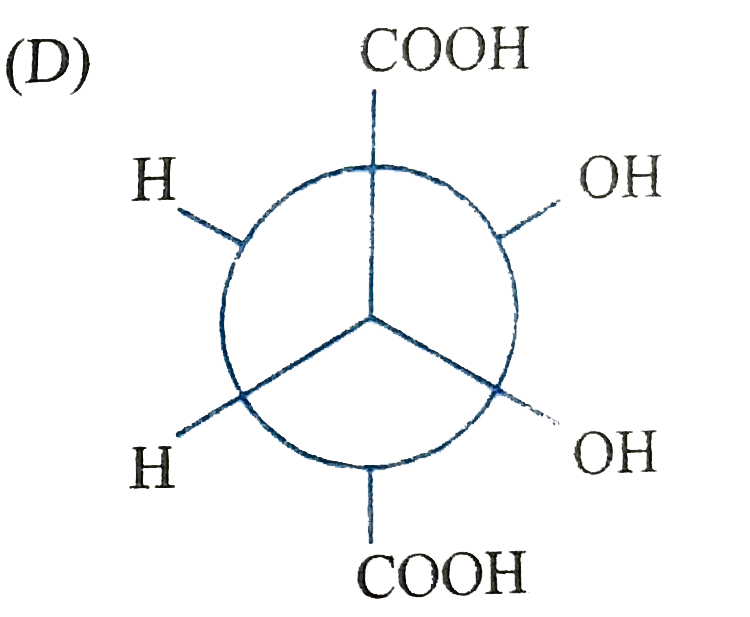Which of the following is an achiral compound?
2,4-dibrono-3-chloropentane
3-hydroxypent-1,5-dioicacid
2,3-dichloropent-1,5-diol
3-ethyl-3methylhex-1-ene
To determine which of the given compounds is achiral, we need to analyze each option for the presence of chiral centers and symmetry. A compound is considered achiral if it does not have any chiral centers or if it has a plane of symmetry.
1. Identify the Compounds:
We have four options to analyze:
- Option 1: 2,4-Dibromo-3-Chloropentane
- Option 2: 2,3-Dichloropent-1,5-diol
- Option 3: 3-Hydroxy-2,3-dichloropentane
- Option 4: A compound with a chiral carbon
2. Analyze Option 1: 2,4-Dibromo-3-Chloropentane:
- This compound has a chain of 5 carbon atoms.
- The second and fourth carbon atoms have bromine substituents, and the third carbon has a chlorine substituent.
- Check for chiral centers: The second and fourth carbons are bonded to two identical bromine atoms, which means they do not have four different substituents.
- Conclusion: This compound has a plane of symmetry and is achiral.
3. Analyze Option 2: 2,3-Dichloropent-1,5-diol:
- This compound also has a chain of 5 carbon atoms.
- Hydroxy groups are present on the first and fifth carbons, and chlorine atoms are on the second and third carbons.
- Check for chiral centers: The second and third carbons are bonded to two identical chlorine atoms, which means they do not have four different substituents.
- Conclusion: This compound has a plane of symmetry and is achiral.
4. Analyze Option 3: 3-Hydroxy-2,3-dichloropentane:
- This compound has a chain of 5 carbon atoms.
- Hydroxy group is on the third carbon, and chlorine atoms are on the second and third carbons.
- Check for chiral centers: The third carbon is bonded to a hydroxy group, a chlorine atom, and two other carbon atoms. This carbon has four different substituents.
- Conclusion: This compound is chiral due to the presence of a chiral center.
5. Analyze Option 4:
- This compound has a chiral carbon with four different groups attached.
- Conclusion: This compound is chiral.
Final Conclusion:
The achiral compounds are Option 1 (2,4-Dibromo-3-Chloropentane) and Option 2 (2,3-Dichloropent-1,5-diol).
We have four options to analyze:
- Option 1: 2,4-Dibromo-3-Chloropentane
- Option 2: 2,3-Dichloropent-1,5-diol
- Option 3: 3-Hydroxy-2,3-dichloropentane
- Option 4: A compound with a chiral carbon
- This compound has a chain of 5 carbon atoms.
- The second and fourth carbon atoms have bromine substituents, and the third carbon has a chlorine substituent.
- Check for chiral centers: The second and fourth carbons are bonded to two identical bromine atoms, which means they do not have four different substituents.
- Conclusion: This compound has a plane of symmetry and is achiral.
- This compound also has a chain of 5 carbon atoms.
- Hydroxy groups are present on the first and fifth carbons, and chlorine atoms are on the second and third carbons.
- Check for chiral centers: The second and third carbons are bonded to two identical chlorine atoms, which means they do not have four different substituents.
- Conclusion: This compound has a plane of symmetry and is achiral.
- This compound has a chain of 5 carbon atoms.
- Hydroxy group is on the third carbon, and chlorine atoms are on the second and third carbons.
- Check for chiral centers: The third carbon is bonded to a hydroxy group, a chlorine atom, and two other carbon atoms. This carbon has four different substituents.
- Conclusion: This compound is chiral due to the presence of a chiral center.
- This compound has a chiral carbon with four different groups attached.
- Conclusion: This compound is chiral.
The achiral compounds are Option 1 (2,4-Dibromo-3-Chloropentane) and Option 2 (2,3-Dichloropent-1,5-diol).
Topper's Solved these Questions
Similar Questions
Knowledge Check
Which of the following is a chiral compound :
A2-methyl pentanoic acidB3-methyl pentanoic acidC4-methyl pentanoic acidDNone of theseWhich of the following is an achiral molecule?
A B
B C
C D
D
Which of the following is an achiral molecule?
A B
B C
C D
D
Which of the following is an ionic compound ?
View SolutionWhich of the following is an inorganic compound?
View SolutionWhich of the following is a heterocylic compound ?
View SolutionWhich of the following is not a compound ?
View SolutionWhich of the following is not a compound of calcium ?
View Solution
